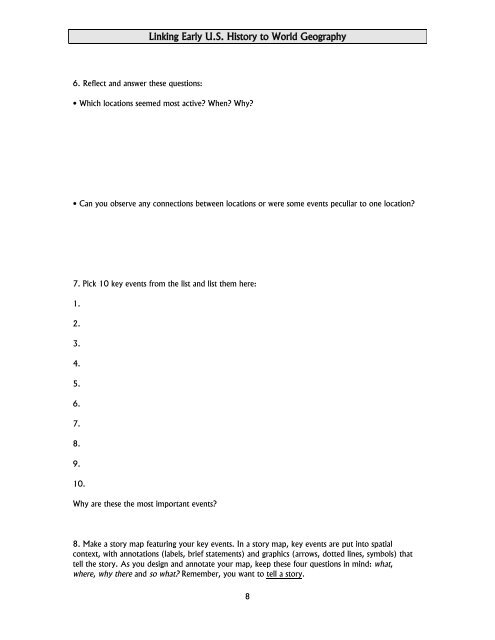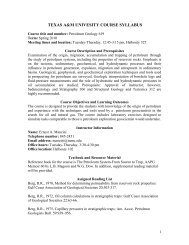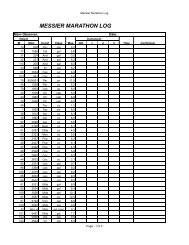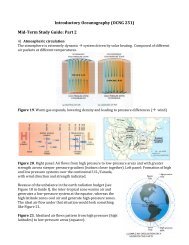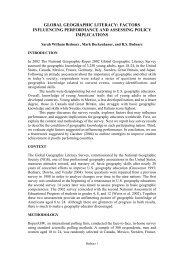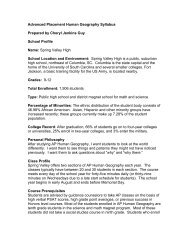Linking Early U.S. History to World Geography Module 1, Activity 1 ...
Linking Early U.S. History to World Geography Module 1, Activity 1 ...
Linking Early U.S. History to World Geography Module 1, Activity 1 ...
Create successful ePaper yourself
Turn your PDF publications into a flip-book with our unique Google optimized e-Paper software.
6. Reflect and answer these questions:<br />
<strong>Linking</strong> <strong>Early</strong> U.S. <strong>His<strong>to</strong>ry</strong> <strong>to</strong> <strong>World</strong> <strong>Geography</strong><br />
• Which locations seemed most active? When? Why?<br />
• Can you observe any connections between locations or were some events peculiar <strong>to</strong> one location?<br />
7. Pick 10 key events from the list and list them here:<br />
1.<br />
2.<br />
3.<br />
4.<br />
5.<br />
6.<br />
7.<br />
8.<br />
9.<br />
10.<br />
Why are these the most important events?<br />
8. Make a s<strong>to</strong>ry map featuring your key events. In a s<strong>to</strong>ry map, key events are put in<strong>to</strong> spatial<br />
context, with annotations (labels, brief statements) and graphics (arrows, dotted lines, symbols) that<br />
tell the s<strong>to</strong>ry. As you design and annotate your map, keep these four questions in mind: what,<br />
where, why there and so what? Remember, you want <strong>to</strong> tell a s<strong>to</strong>ry.<br />
8


